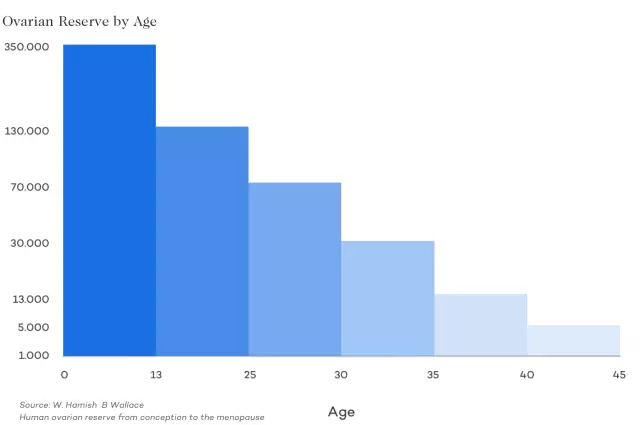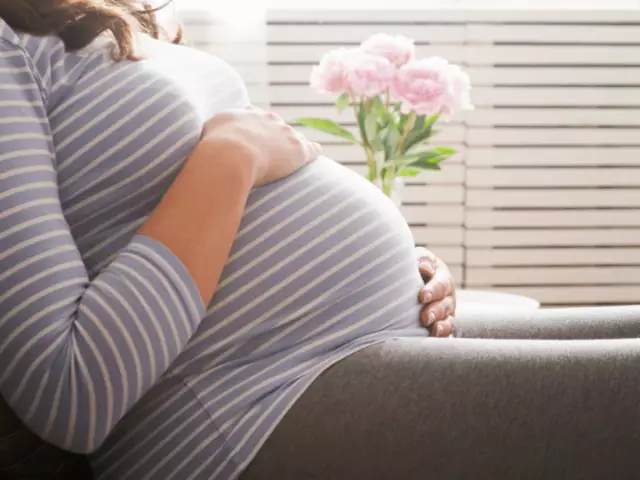- Author Rachel Wainwright [email protected].
- Public 2023-12-15 07:39.
- Last modified 2025-11-02 20:14.
Chance of getting pregnant
The possibility of conception excites both those who dream of offspring, and those who postpone this happy event for later.

The likelihood of getting pregnant in a woman at different periods of life and even the days of the menstrual cycle is different. The likelihood of getting pregnant during ovulation, calculated by the duration of the cycle or confirmed by ultrasound or a test, is considered the highest. The likelihood of getting pregnant is a statistical parameter that has been evaluated in large groups of women over a long period of time. In each specific situation, a lot is determined by chance. Even a very low probability of getting pregnant is too big a risk for a responsible woman who is not planning a child.
The likelihood of getting pregnant on the day of ovulation
The likelihood of getting pregnant in women is directly related to the maturation of the egg. A healthy woman of reproductive age has a steady menstrual cycle. Within a month, successive changes occur in the body, preparing a woman for a possible pregnancy. Under the action of pituitary hormones, several eggs begin to mature in the ovaries. By the 8-10th day of the cycle, one of them turns into dominant and continues to grow, while the rest undergo a reverse development. On the 14th day in the average menstrual cycle, a mature egg is released - ovulation. The chances of getting pregnant on the day of ovulation are highest. If both partners are healthy, then conception occurs with a 95% probability. However, this does not mean that after two weeks the pregnancy will be fixed. This is where natural selection intervenes. About 18% of fertilized eggs have defective genetics. Such offspring may turn out to be weak and unviable, therefore, the pregnancy in this case is terminated almost before it has begun. In such situations, the test does not even have time to fix the conception that has occurred, and the woman remains unaware that a spontaneous abortion has occurred. The likelihood of getting pregnant during ovulation is maximum, but conception is possible on the rest of the cycle. The most dangerous in this regard are 4-5 days before the release of the egg and 1-2 days after. The calendar method of prevention is based on this knowledge. However, one must understand that the real menstrual cycle is different for each woman. Sometimes the maturation of the egg occurs much earlier or later than 14 days. It is also possible to ovulate again in the same menstrual cycle (usually around 22-25 days). The likelihood of getting pregnant remains at a certain level every day of the month. Unprotected intercourse, even on the first day of menstruation, sometimes leads to conception.
The likelihood of getting pregnant and age
Age has the greatest influence on reproductive function in women. From 18-20 years and up to 24, the probability of getting pregnant is the highest. This means that with regular sexual activity, conception will occur in 86% of couples during the first 2-3 menstrual cycles. From the age of 25, the likelihood of getting pregnant becomes lower. At first, the decline in fertility is not very noticeable. At the age of 25-29, 78% of women will become pregnant in the first 2-3 months without contraception. After 30, this decline becomes critical. By the age of 40, only 35% of women are able to conceive in the first menstrual cycle. The likelihood of getting pregnant immediately after giving up contraception reflects the overall health of the reproductive system. The younger a woman is, the more her body is capable of conceiving. This does not mean that pregnancy will not occur in a particular woman after 25 or even 35 years. It is quite possible that some women in 40 years after one single unprotected intercourse will be "in position." But the likelihood of getting pregnant in women under 25 is still much higher.
Probability of getting pregnant and body weight
The likelihood of becoming pregnant is associated not only with age, but also with the woman's body weight. Girls and women with normal body weight experience the least problems with conceiving a child. The body mass index (BMI) can be used to determine whether the weight is as desired. This indicator takes into account the woman's height and her body weight. A BMI between 18.5 and 24.9 kg / m² is considered normal. A woman with this index value is the most likely to become pregnant. In general, about 92% of women in this group will become pregnant with regular sex within 2 years. Lack of body weight, as well as obesity, can affect conception. And for women with a BMI less than 18.5 kg / m², and more than 25 kg / m², the likelihood of becoming pregnant is reduced.
The likelihood of getting pregnant after childbirth
Many women neglect contraception in the first months after giving birth. This negligence often results in unwanted pregnancy. The very fact of having a baby even without breastfeeding reduces fertility very significantly by 5-6 months, but far from zero. The probability of getting pregnant after childbirth in a woman who feeds her baby 10-12 times a day is minimal only in the first six months. When the baby is 6 months old, reproductive function is restored. With a regular sex life, more than 50% of couples will face a new pregnancy within a year after giving birth. Ovulation in the first months is irregular, but the risk of conception is still very high. Pregnancy in the first year after childbirth is considered undesirable from the point of view of the health of the mother and the unborn child. Also, many couples can hardly cope morally and financially with the role of parents of weather children. The chances of getting pregnant in a young mother should be minimized with the correct means of protection.

The most suitable for safety and reliability are special hormonal tablets based on gestagens, barrier methods and intrauterine systems.
The likelihood of getting pregnant and abortion
It is widely known that artificial termination of pregnancy reduces fertility. It really is. Abortion at a young age and before the first birth is especially destructive to the female reproductive system. If the formation of the reproductive system has not yet been completed, then the artificial termination of pregnancy can disrupt the hormonal balance and the interaction of the central and peripheral endocrine glands. The likelihood of getting pregnant after an abortion is still very high. Medical abortion affects the ability to conceive least of all. Any artificial termination of pregnancy should be accompanied by explanatory work. A woman must understand that conception can occur again in the first menstrual cycle. Even if, for some reason, a subsequent pregnancy is considered by a lady as desirable, it should be avoided for at least 3 months. A spontaneous abortion is called a miscarriage. Most often, such an interruption does not reduce a woman's fertility. Conception is possible almost immediately after a miscarriage, but due to medical reasons, it must be postponed for 3 months. The likelihood of getting pregnant after an induced or spontaneous abortion is most influenced by complications. Inflammation can lead to obstruction of the fallopian tubes and secondary infertility. Inflammation can lead to obstruction of the fallopian tubes and secondary infertility. Inflammation can lead to obstruction of the fallopian tubes and secondary infertility.
Found a mistake in the text? Select it and press Ctrl + Enter.






